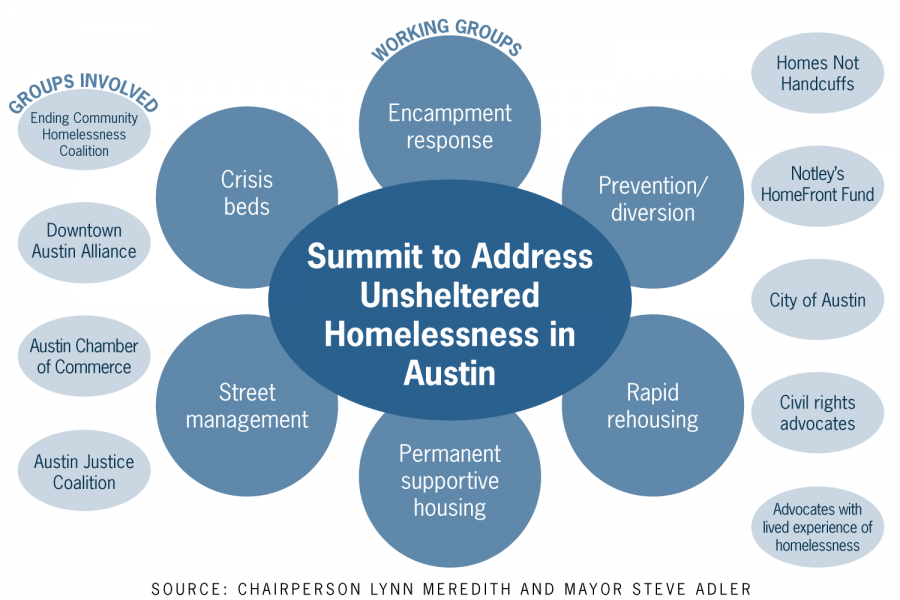City officials and community advocates release plan to house 3,000 unsheltered residents by 2024
April 19, 2021
Editor’s Note: This article first appeared in the April 16 issue of The Daily Texan.
The Summit to Address Unsheltered Homelessness in Austin released a report Thursday detailing a plan to house 3,000 unsheltered residents by April 2024.
“Starting today, the plan aims to house 100 people by June, 200 by August, 400 by December, 1,200 by October 2022 and finally, 3,000 by April 2024,” said a press release from the summit sent to The Daily Texan Thursday.
According to the city of Austin, varying estimates show anywhere from 2,506 to 10,000 individuals experience homelessness on any night.
“The goals are met through a combination of rehousing interventions including, but not limited to, a radical expansion of affordable housing and near-term rehousing strategies to rapidly reduce encampments,” the press release said.
This summit comprises a coalition of community organizations, activists and citizens who have met since March to create a comprehensive plan for action. Some community partners include the Ending Community Homelessness Coalition, Downtown Austin Alliance, Austin Chamber of Commerce, Austin Justice Coalition, Homes Not Handcuffs, Notley’s HomeFront Fund and city of Austin representatives such as Mayor Steve Adler.
The goal to have 3,000 residents in housing by 2024 accounts for more housing than people currently living on the streets, according to the report. The report said it must overshoot the summit’s goal to achieve enough available housing units proportional to people who need housing.
“It’s really important to note that, even though ECHO does a fantastic job with the (unhoused) count, there’s no possible way that we’re counting everybody,” said Chas Moore, executive director and founder of the Austin Justice Coalition. “We add for inflation to make sure that whatever the issue is, that at the end of it, that we have enough housing for anybody that chooses or wants to be housed.”
Additionally, the plan can set Austin on a course to serve 7,500 unhoused people beyond the outlined timeframe.
Lynn Meredith, chair of the coalition’s Core Leadership Planning Group and ECHO board member, said the ways in which people are housed will vary. Some people may be placed in rental units, while others will be given the resources to reconnect with their community and family and find housing there, she said.
“This build-out is going to require all of us in the city, all of the community, to lock arms to get to the outcome that we want. In five years, if we do this well, our city will look very different,” Meredith said.
One aim of the plan is to establish, within five years, a homelessness response system that rehouses an individual within 30 days of experiencing homelessness, according to the report.
Within the summit, six working groups were formed to address solving issues of prevention and diversion, crisis beds, permanent supportive housing, rapid rehousing, street management and encampment response.
The plan estimates a $240 million budget to complete the effort. Approximately $72 million of this budget has been secured, leaving a $168 million gap. The effort is hoping to receive American Rescue Plan funds allocated to Travis County and Austin to close the funding gap, according to the report.
Mayor Adler said in a statement Thursday that the city “must address the lack of housing, mental health and other services, and equity in its systems.”
“This approach will meet the challenge of homelessness and create dignity for our unhoused residents without pushing them further into the shadows,” Adler said. “Government cannot do this alone and great appreciation is due (to) the community partners stepping up to help lead this effort. Now that we’re beginning to exit the COVID-19 virus, Austin will start to see real results and successes with homelessness.”












